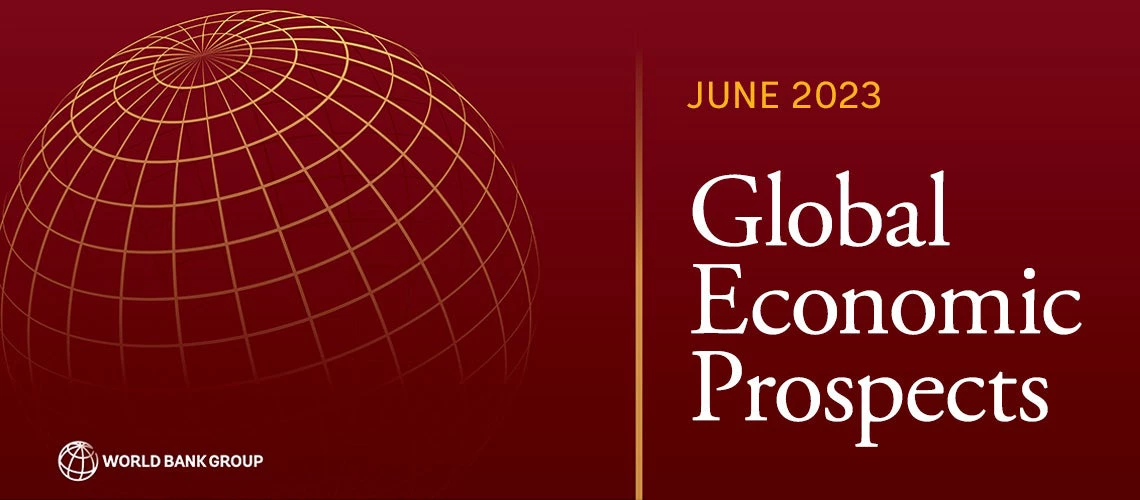 Partial image cover of the Global Economic Prospects
Partial image cover of the Global Economic Prospects
The global economy is set to slow substantially in 2023. The lagged and current effects of monetary tightening, as well as more restrictive credit conditions, are expected to weigh on activity in the second half of the year, with weakness persisting into 2024. Excluding China, growth in emerging market and developing economies (EMDEs) is set to decline markedly, with the outlook weakest in countries with elevated fiscal and financial vulnerabilities. The resurgence of recent banking sector turmoil represents a serious risk. Widespread financial stress could have especially severe economic consequences.
1. Global growth is slowing
The global economy is forecast to slow substantially this year, with a pronounced deceleration in advanced economies. Monetary tightening is expected to have its peak impact this year for many major economies. Global growth is forecast to decline to 2.1 percent in 2023, a full percentage point less than in 2022, before a tepid recovery to 2.4 percent in 2024. In emerging market and developing economies (EMDEs) excluding China, growth is projected to fall to 2.9 percent in 2023, from 4.1 percent in 2022, as tight global financial conditions and subdued external demand weigh on activity. Global growth could weaken more than anticipated in the event of further financial sector stress, or if persistent inflation prompts tighter-than-expected monetary policy.
Contributions to global growth
2. Monetary policy will weigh on growth this year and next
The substantial near-term deceleration expected in advanced economies is mainly due to the lagged effects of the sharp rise in policy rates over the past year and a half, aimed at reining in high inflation. Tight monetary policy in the United States, in particular, can adversely affect EMDEs in several ways. It slows the U.S. economy, which reduces demand for EMDE exports, and tends to lead to higher interest rates in EMDEs.
Federal Reserve hiking cycles, cumulative
3. Restrictive financial conditions pose severe challenges for vulnerable EMDEs
The majority of EMDEs have so far withstood global monetary tightening with limited financial stress. However, in EMDEs with pronounced vulnerabilities (as reflected by low credit ratings) sovereign risk spreads have widened sharply, domestic currencies have depreciated, and already-limited fiscal space has dwindled further. Growth projections for these economies have been revised markedly lower, to less than 1 percent in 2023.
EMDE growth in 2023, by credit rating
4. The pandemic recovery remains weak
In per capita terms, the latest forecasts suggest a weak recovery from the overlapping shocks of the past three years. Nearly a third of EMDEs, including two-thirds of countries in fragile and conflict-affected situations, are expected to have lower per capita incomes in 2024 than they did in 2019. Fragility continues to aggravate humanitarian crises, entrenching extreme poverty.
Countries with lower GDP per capita in 2024 than in 2019
5. Further episodes of financial stress are a serious risk to the global economy
Several large banks in advanced economies have failed this year. More—and more disorderly—bank failures represent a key risk. The negative effects would be greatest if banking turmoil were to escalate into a systemic crisis, transmitted around the world via cross-border financial linkages. This would result in a severe downturn in the global economy in 2024—global growth could decline to just 0.3 percent. A severe credit crunch confined mostly to advanced economies would do lesser though still serious damage, reducing global growth in 2024 to 1.3 percent.



Join the Conversation